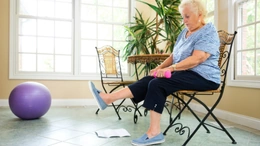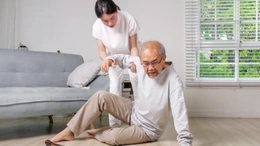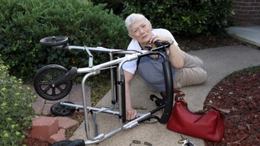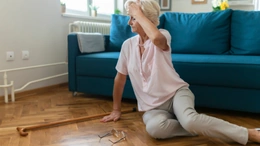Bed Rails For Adults: Benefits, Installation Tips, And Safety Features

As people get older, even simple things like getting up or turning in bed can feel shaky. Some people are afraid of falling in the middle of the night. For some, it's just needing something solid to hold on to. Both of these things can be helped by bed rails.
They help where it's needed most and do their jobs without bothering anyone. This is a small change that can make a big difference if you are taking care of an older parent or making their room safer.
This guide will tell you how bed rails work, how to put them up the right way, and what features are really worth paying attention to.
Benefits Of Bed Rails For Seniors And Adults
Bed rails aren’t just for hospital beds. Bed rails for adults can make a big difference at home too, especially for seniors who need extra support. They quietly help make sleep, movement, and everyday routines feel safer and easier to manage. Here’s how they actually help:
- Prevents Falls While Sleeping Or Getting Up: A bed rail gives that small but strong support when turning or getting up. It stops accidental slips that can lead to big injuries, especially during those groggy moments after waking or at night.
- Supports Sitting Up And Standing Safely: One should not find it difficult to get out of bed. Bed rails provide something to hold on to and help make it easier to sit up or stand when you are stiff and the joints are not comfortable to move, or you have no one to assist you.
- Reduces Pressure On Joints And Muscles: Stress can be placed on weary knees, backs, or shoulders by the movements. Having a bed rail provides a secure grip, making it easier to get up without the strain of lifting your entire body, especially when your arms are already sore.
- Slows Down Unsafe Movement In Memory Loss: When elderly individuals experience difficulty in remembering things, they may rise too fast or forget that they require assistance. Bed rails act like a pause but with faint barrier-like qualities that cause them to slow down and give an opportunity to caregivers to notice or take action.
- Makes Caregiving A Bit Easier: Bed rails support your loved one even when you’re not right there. They reduce how often you need to lift, guide, or worry, taking some weight off your shoulders, too.
- Works For Both Home And Care Facility Beds: No hospital bed needed. Most bed rails fit right onto regular beds at home, in assisted living, or in rehab. A simple way to add safety without changing the whole setup.
Installation Tips For Home Use
Setting up a bed rail at home isn’t complicated, but a few small steps can make a big difference in safety and comfort. Here’s what to keep in mind:
- Pick The Right Type Of Rail: Some rails stay fixed. Others fold down. Some are long, some short. Choose what suits the person’s movement. If they need full support, get a full-length rail. If they just need help standing up, a shorter one is enough.
- Match It With Bed Size And Frame: Not every rail fits every bed. Check the size, twin, queen, or whatever you have and make sure the frame allows the rail to fit tight and sit level. It shouldn’t wobble or hang loose.
- Make Sure It’s Stable And Doesn’t Move: Once installed, push and pull it. If it moves, fix it. A rail that shifts can make things worse instead of helping. It should feel like part of the bed.
- Use The Straps Or Screws Given: People often skip this step. Don’t. These parts keep the rail from sliding when someone puts weight on it. Without them, the whole thing can give way when it’s actually needed.
- Check Mattress Height And Fit: If the mattress is too thick, too soft, or uneven, the rail won’t sit right. Check how well it lines up. It should be easy to grab and not sink when leaned on.
- Install On The Side They Use Most: Everyone has a side they naturally get out of bed from. Put the rail there. It should support the usual movement, not force them to change how they get up.
Must-Have Safety Features To Consider
Not all bed rails are built the same. Some feel solid, others don’t. These are the features worth checking before you buy or install one:
- Handles That Don’t Slip: The rail should have a grip that doesn’t slide, even if hands are sweaty or weak. Foam or textured handles help the person hold on without their hand slipping off mid-movement.
- Locks That Stay Firm: If the rail folds or adjusts, make sure the locks actually stay put. A shaky or loose lock can collapse when leaned on, and that’s the last thing you want.
- Strong Enough To Hold Body Weight: Check the weight limit. The rail should support the person’s full weight if they lean or push against it. Flimsy rails bend or break, and that’s a serious safety risk.
- Padding To Avoid Bruises: Some people bruise easily, especially older adults. A bit of soft padding on the rail helps prevent bumps, scrapes, or sore spots from brushing against it in sleep.
- Small Add-Ons That Make Life Easier: Things like side pockets for glasses, a nightlight, or easy-release buttons aren’t just extras. They save effort and make using the rail simpler for both the person and their caregiver.
Conclusion
A bed rail is not a huge, glamorous modification, but it works better than you can imagine. Bed rails for adults assist a bit when one is struggling to sit, move, or fall asleep during the night.
No one cares how it looks as long as it fits properly, remains in position, and does everything properly without bothering people. It is not always the big things that matter the most with regard to care, sometimes it takes the small things into account.






















